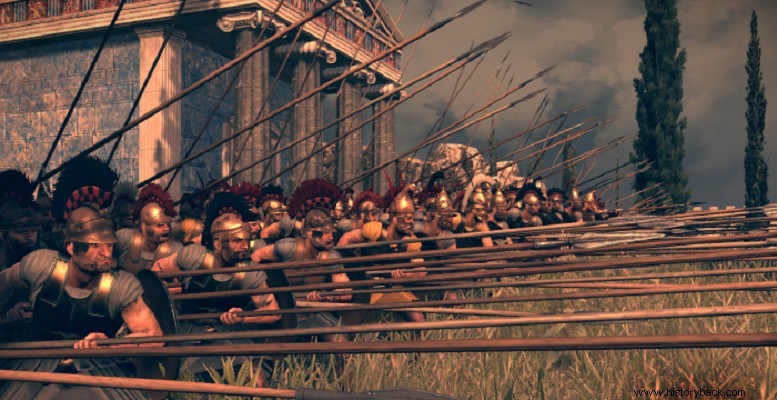
In 207 BC Greece was once again torn apart by civil strife. In the Peloponnese the conflict between the Achaean League and Sparta was at its height. Sparta, under the tyrant Mahanidas, had assembled a powerful army and claimed Peloponnesian hegemony through a network of alliances.
On the other side the Achaean Commonwealth, now under the leadership of Philopimenos, he wished to include, at last, the Dorian city within his bosom, politically unifying the Peloponnese and preventing other powers from getting involved in it.
Filopoimen had reorganized the army of the Commonwealth with the infantry now fighting in a Macedonian phalanx formation, armed with sarissas and the heavy cavalry becoming a shock instrument, equipped with lances (scraper), like Alexander's Companions. There were also light cavalry of the Tarantino type.
The Tarantine light cavalry was as famous in the ancient world as the "Croats" and hussars are in modern times. the first units of the type were formed in Taranto, but later their use was generalized and the name simply indicated a type of cavalry and not origin. They carried a large shield, helmet, sword and javelins. They fought in an open order.
The army of the Commonwealth was supplemented by units of mercenaries and non-elite peltasts (shield-bearers and breast-bearers) and lightly armed infantry (light archers, javelinmen and slingers). The Spartan army was accordingly armed in terms of heavy infantry and had many experienced mercenary peltasts. However, he was behind in cavalry. He also possessed a considerable number of Psils.
The conflict
The two armies met at Mantineia in 207 BC. Although we do not know the exact number that the opposing forces deployed from the context of the sources we can conclude that the opponents deployed about 20,000 men each.
Philopoimen sent light infantry on his left flank, on an adjacent hill, to the right of which he sent cuirassiers and Illyrian mercenaries. The left flank was covered by his "Tarantine" horsemen. In the center he ordered the phalanx, in front of a trench, and on his right his elite cavalry with the same leader.
Mahanidas placed himself at the head of his right flank, where his own "Tarantine" horsemen and experienced mercenaries were placed. He arranged the phalanx conventionally and also used catapults.
Instead of sitting passively and suffering losses from the catapults, Philopoimen attacked with his light cavalry against the catapults. Immediately Mahanidas counterattacked with his own light cavalry. Gradually, the mercenary peltasts of the two armies also got involved in the battle. But those of the Spartans prevailed and chased their opponents disorderly.
Then Philopoimenus turned his front and attacked the Spartan phalanx from the exposed flank, which he destroyed. When Mahanidas remembered to stop the pursuit and return it was too late. His men fled as he did. But Philopoimen spotted him and killed him himself with his lance.
The Spartan army was disbanded. At least 4,000 Spartans were killed. The number of dead mercenaries, many of whom surrendered, remains unknown.
